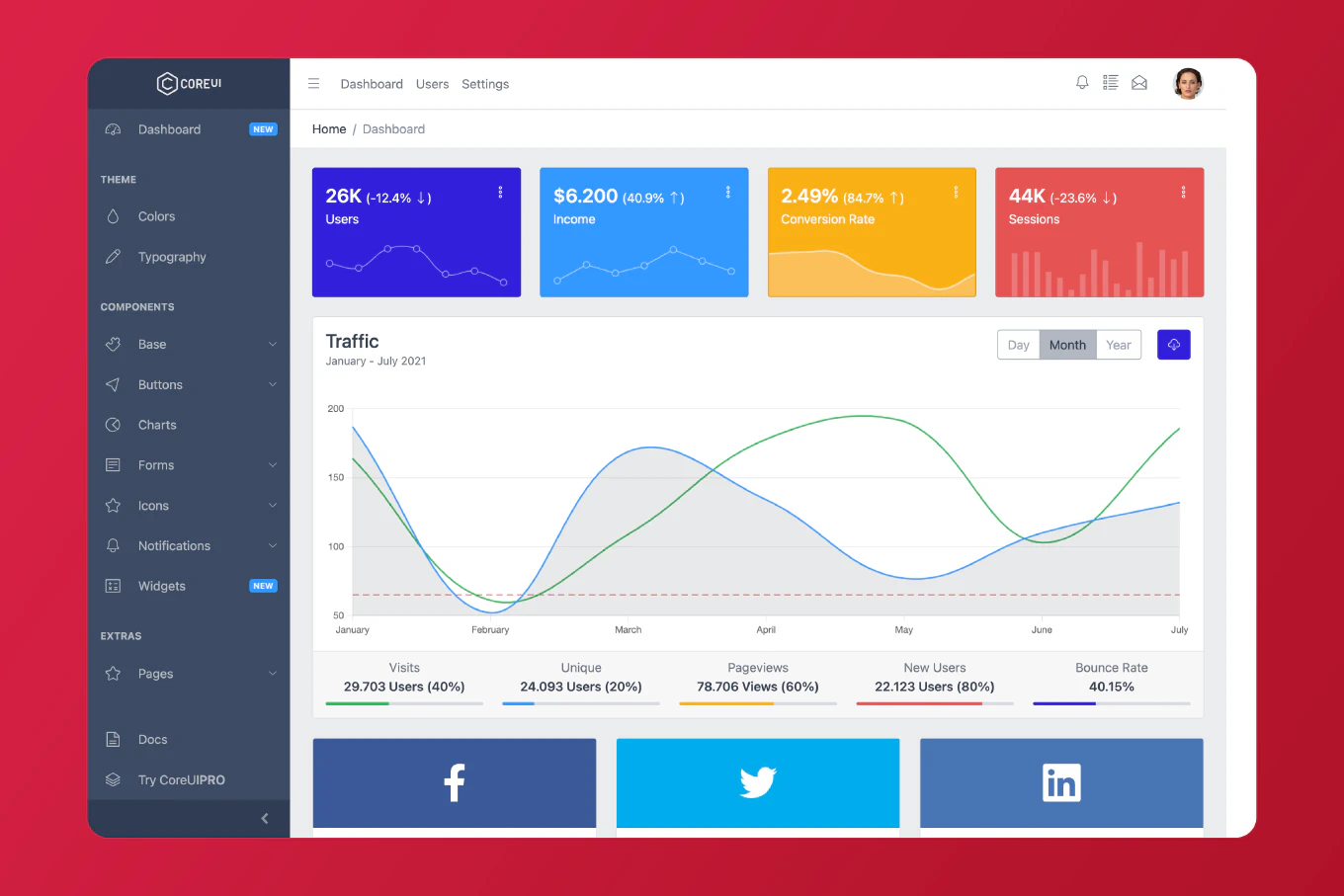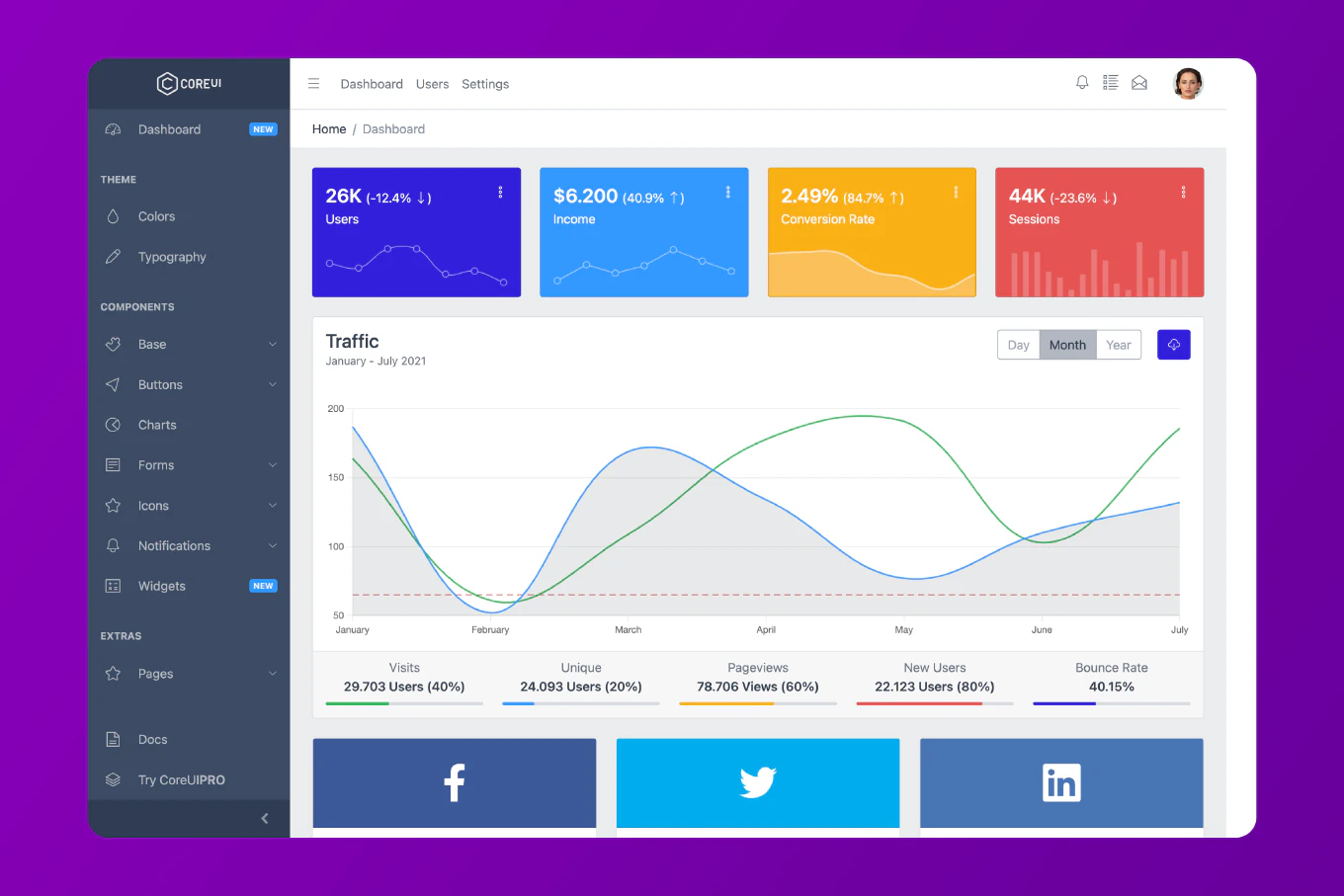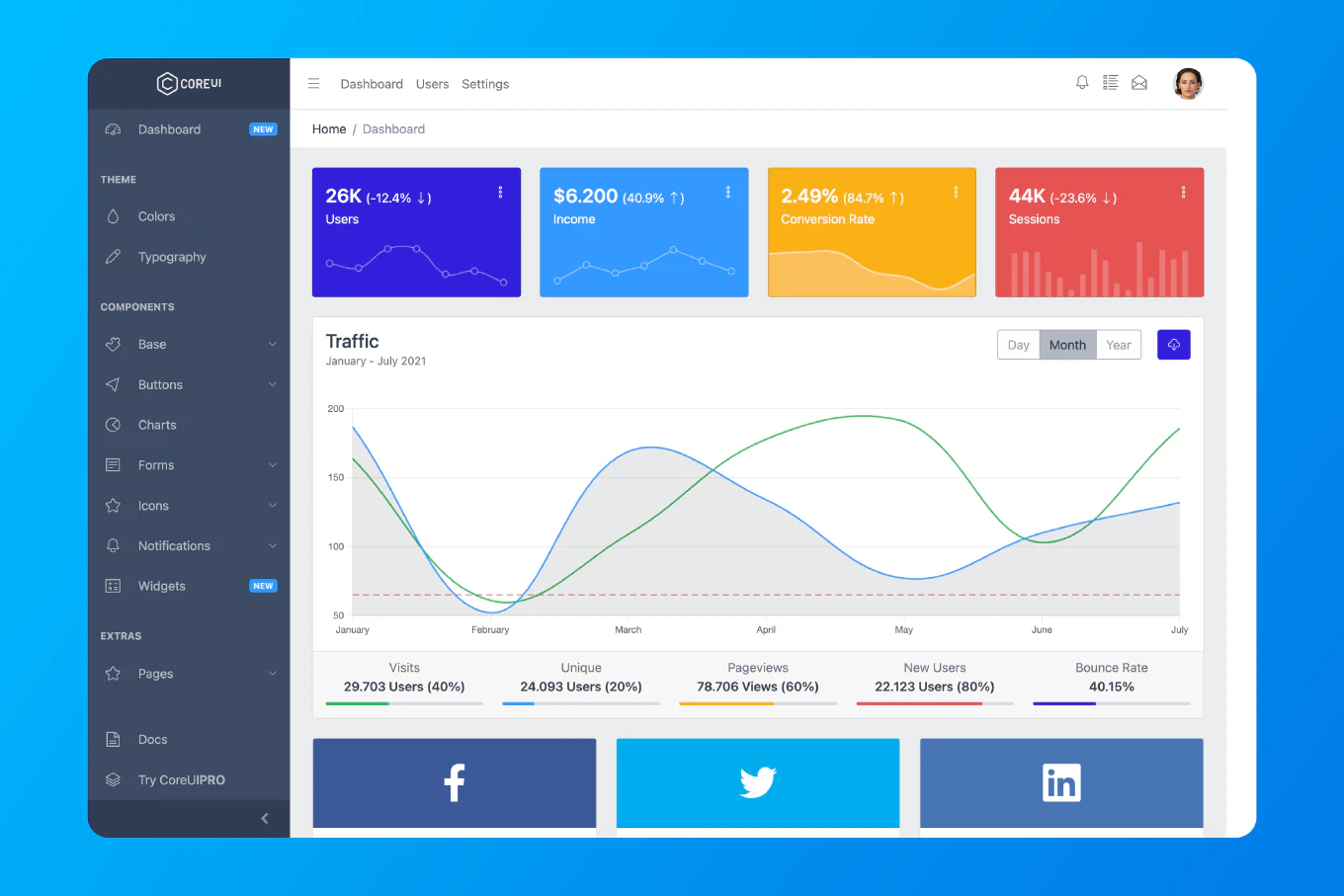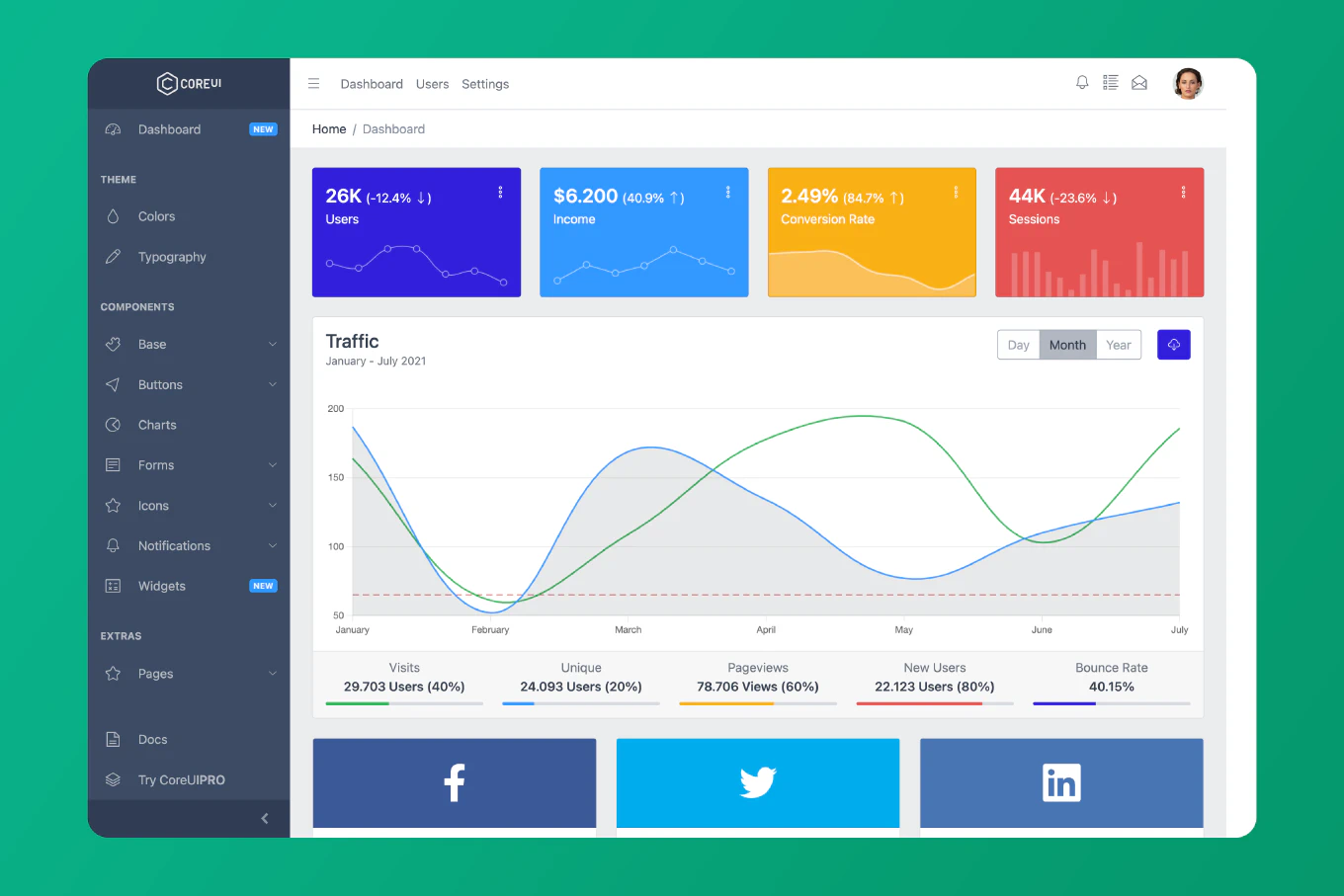How to add days to date in JavaScript
Adding days to dates is fundamental for calculating deadlines, scheduling events, and building calendar functionality in web applications.
As the creator of CoreUI with over 25 years of development experience, I’ve implemented date calculations in countless scheduling components and business logic scenarios.
The most reliable approach is using the setDate() method which automatically handles month boundaries, year transitions, and leap years.
This native JavaScript method eliminates edge case bugs that plague manual date arithmetic.
Use setDate() with getDate() to safely add days to any date.
const date = new Date()
date.setDate(date.getDate() + 7)
The setDate() method automatically handles overflow when adding days that cross month or year boundaries. When you call date.getDate() + 7, it adds 7 days to the current day of the month. If this exceeds the month’s length, JavaScript automatically rolls over to the next month and adjusts the year if necessary. This approach correctly handles February 29th in leap years, varying month lengths, and year transitions.
Best Practice Note:
This is the exact method we use in CoreUI date picker components for reliable date calculations.
Always create a new Date object (new Date(originalDate)) before calling setDate() to avoid mutating the original date reference.







